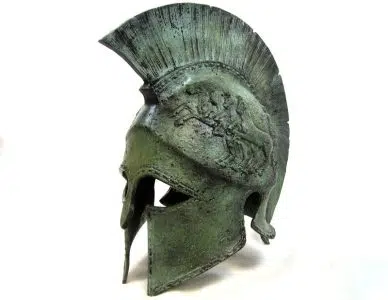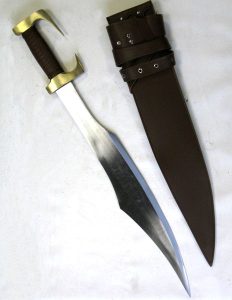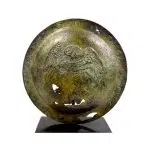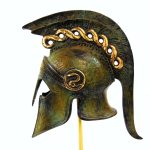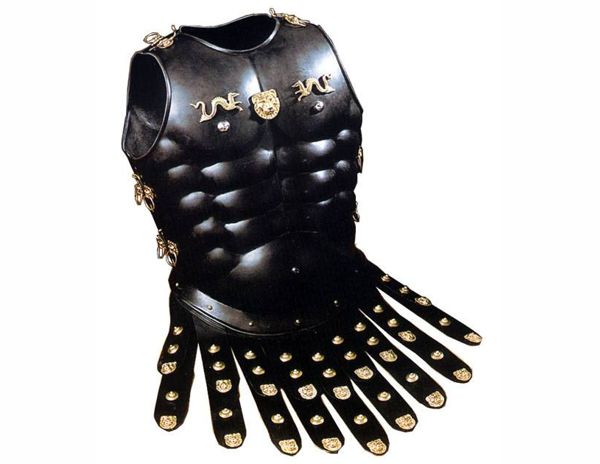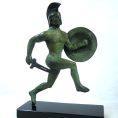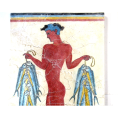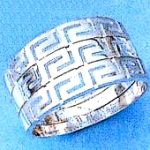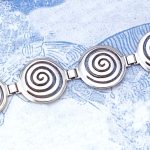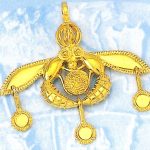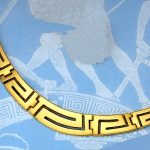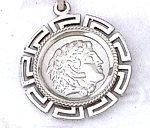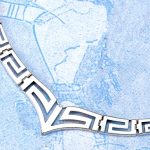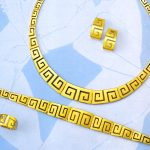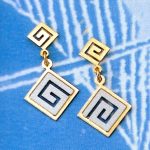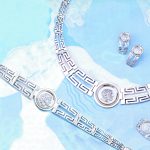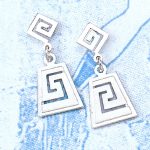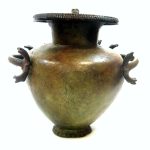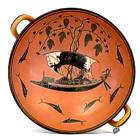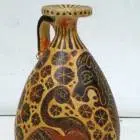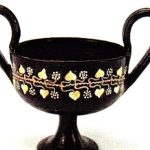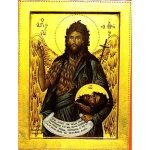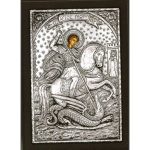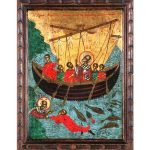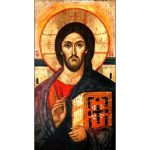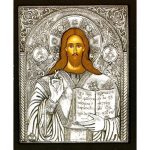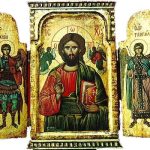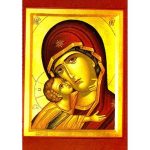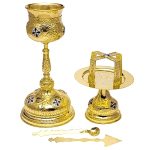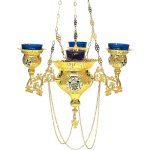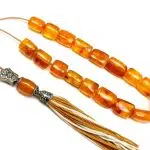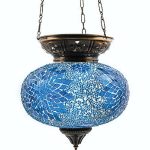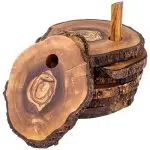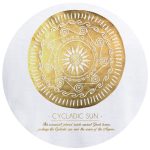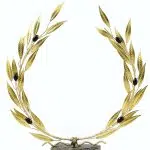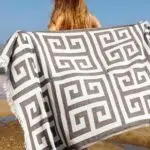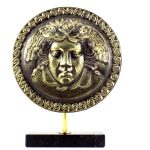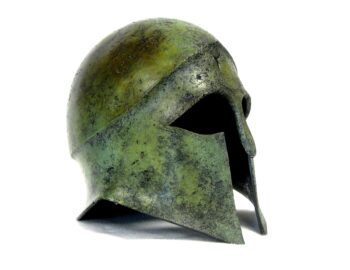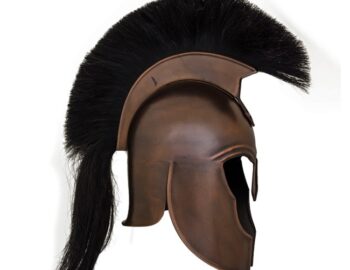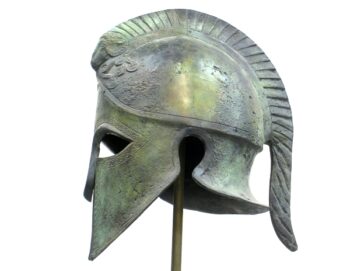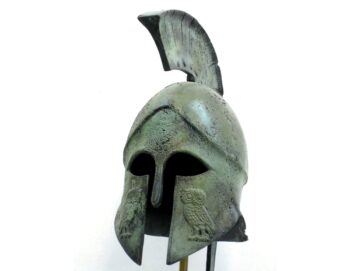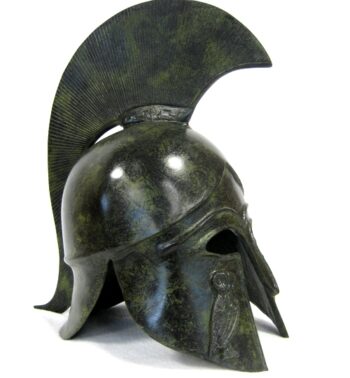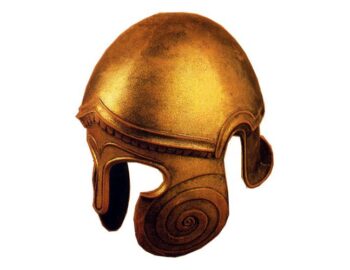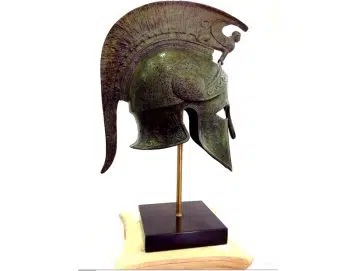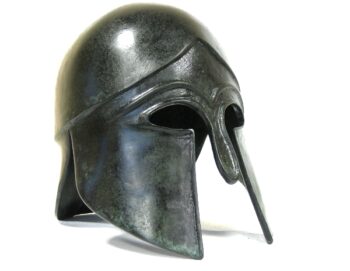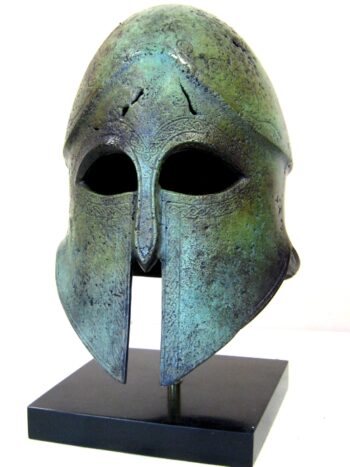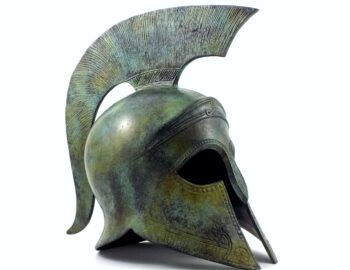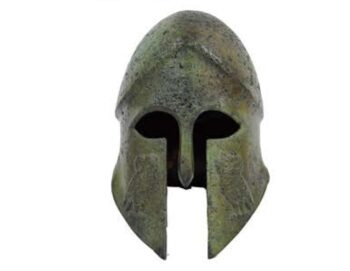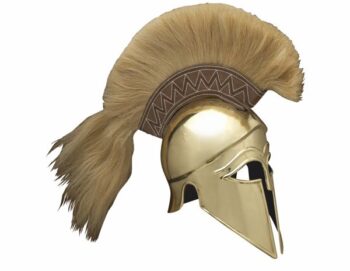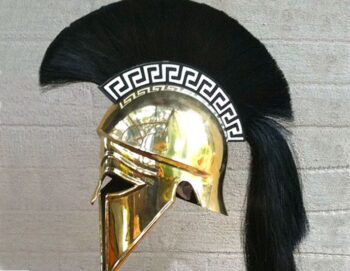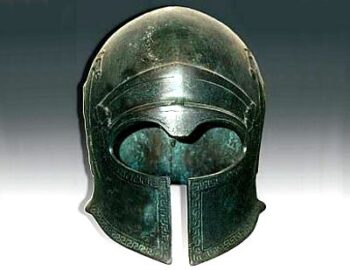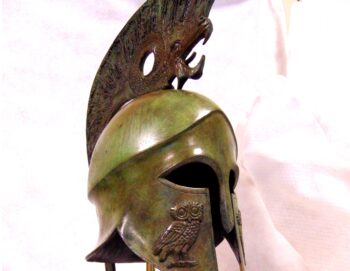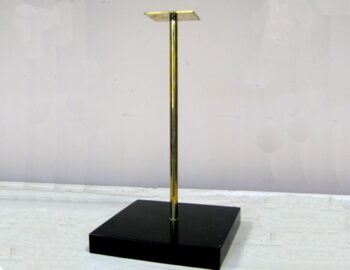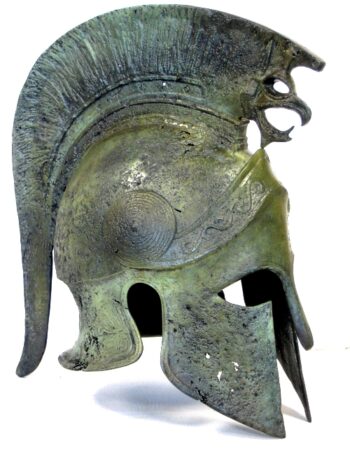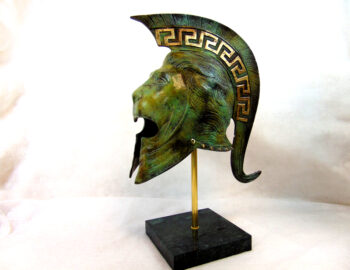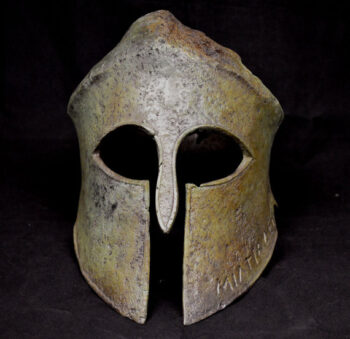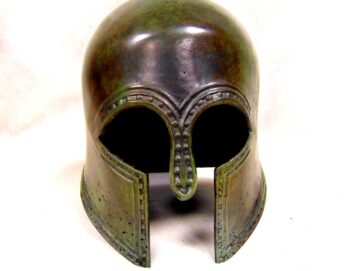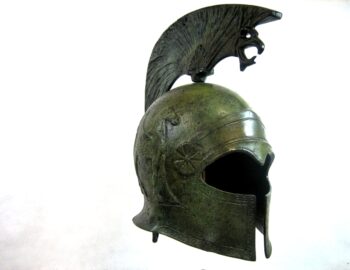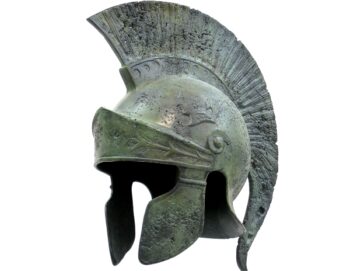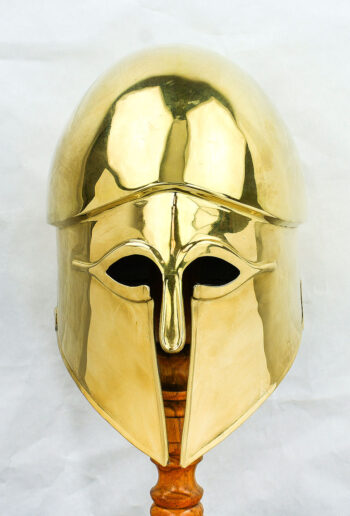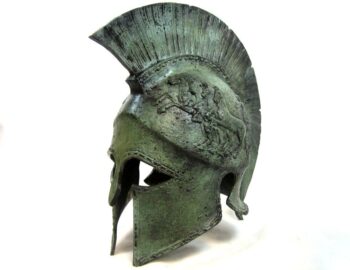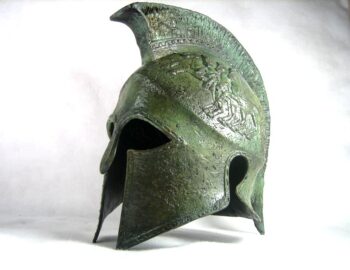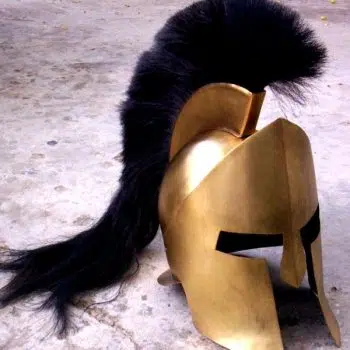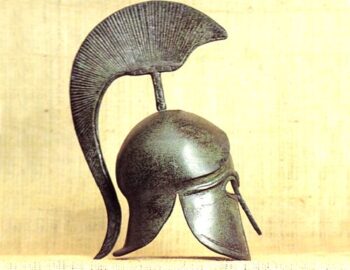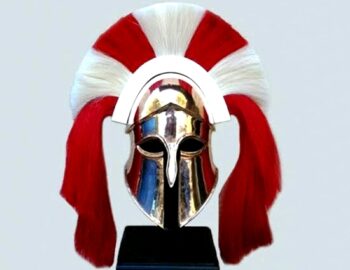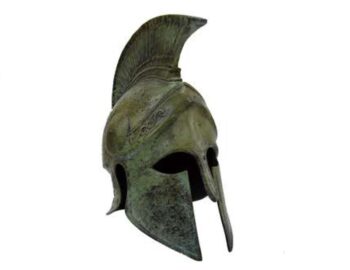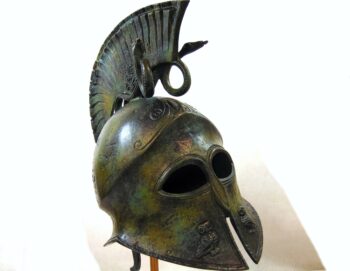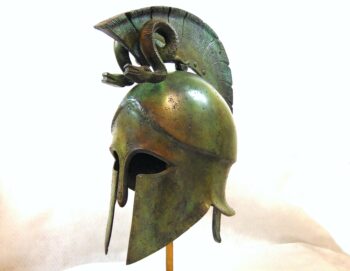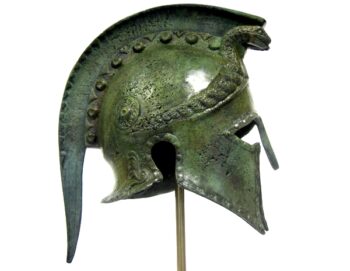This website uses cookies so that we can provide you with the best user experience possible. Cookie information is stored in your browser and performs functions such as recognising you when you return to our website and helping our team to understand which sections of the website you find most interesting and useful.
Ancient Greek helmets can be summarized and categorized in five main types which are representative of the warfare culture of the era of their invention. By chronological order of the evolution of Greek helmets, these are the Boar’s Tusk Helmet, the Illyrian Helmet, the Corinthian Helmet, the Chalcidian Helmet and the Attic helmet.
From as early as the 17th century BCE to Roman times, we will take a closer look to the most important Greek helmet designs, their craftsmanship and their cultural and military significance.
Athenian Hoplite Full Size Helmet
$729.00 – $808.00Athenian Officer Full Size Helmet
$699.00 – $778.00Corinthian Full Size Helmet
$599.00 – $678.00Corinthian Full Size Helmet
$599.00 – $678.00Potidean Officer Full Size Helmet
$729.00 – $808.00Roman Full Size Helmet
$729.00 – $808.00Spartan Full Size Helmet
$699.00 – $778.00Spartan Full Size Helmet
$699.00 – $778.00Spartan Full Size Helmet
$299.00 – $378.00Spartan Hoplite Full Size Helmet
$699.00 – $778.00Spartan Phalanx Full Size Helmet
$699.00 – $778.00Boar’s Tusk Helmet – the Greek helmet of hunting prowess
The Boar’s Tusk Ancient Greek Helmet was introduced in the 17th century BCE, when the Mycenaean Empire controlled Greece. This conically shaped helmet consisted of alternating levels of boars’ tusks which were sewn into a felt or leather cap which served as the base of the helmet.
Boar’s Tusk Helmets did not have a uniform design. Cheek guards were often added to the helmet to offer extra protection. They were formed from a single vertical series of boars’ tusks. Additionally, during the Bronze Age, Greek helmets showcased unique embellishments such as bull’s or ram’s horns, enriching the variety of adornments seen in ancient Greek statues.
Unlike the later, more battle-focused Greek helmets, it is believed that the Boar’s Tusk Helmet may have been a prestige item related to hunting prowess. Hunting was a frequent theme in Mycenaean art, and boar was often the target. The Boar’s Tusk Helmet was an effective display of skill as each helmet required somewhere between forty and fifty boars.
Illyrian Helmet – the iconic Greek helmets with the horsehair crest
The Illyrian Helmet is iconic among Greek helmets and called so because of its popularity amongst the Macedonians and non-Greek Illyrians. However, the ancient Greek helmet known as Illyrian Helmet was originally developed on the Peloponnese and quickly became popular throughout Greece. It covered the entire head, cheeks, and even part of the throat. Its main disadvantage was that the face was left open and due to the fact that the helmet was forged in two pieces which were soldered together along its peak, it was especially weak along the seam.
The horsehair crest, which was initially introduced in Greek helmets as a psychological and stylistic asset, attempted to address the issue. When the crest ran from back to front it conveniently concealed and strengthened the crease atop the Illyrian Helmet. This style of crest quickly became a popular necessity, and for several centuries the crests of Greek helmets almost exclusively ran from front to back.
The Illyrian Helmet became a favorite of warriors that utilized light infantry, loose formations, and cavalry which all required the visibility of an open-faced helmet, such as the Macedonians and Illyrians.
Corinthian Helmet – the favorite Greek helmet of the Spartan and Athenia armies
The Corinthian Helmet appeared a little later than the Illyrian Helmet and was immensely more popular. It was remarkably strong as it was forged out of a single piece of bronze which covered the entire face by a long nose guard and two thick cheek guards which almost met over the mouth. However, unlike other Greek helmets, the Corinthian helmet left the neck vulnerable, it was notoriously uncomfortable and heavy, it had little to no padding, it greatly restricted vision, and had no ear holes.
Another drawback was that Corinthian Helmets had to be made specifically for each soldier. If the helmet did not fit tightly over the soldier’s head, then a glancing blow could turn the helmet in battle and completely blind the soldier. This need for an exact fit meant that the helmet could not be passed through families or recovered from battlefields.
However, by the end of the 6th century BCE, the Corinthian Helmet had been adapted to address its defects, making it one of the best Greek helmets created until then. The cheek guards and the back of the helmet were extended to rest on the wearer’s shoulders providing thus adequate protection for the neck and throat. A ridge was added above the forehead encircling the peak of the helmet thereby allowing for extra padding and additional protection from glancing blows. Finally, large ear holes were cut into the sides of the helmet to allow for communication on the battlefield.
These improvements became a staple of Greek helmets and established the Corinthian Helmet as a favorite Greek helmet type among armies as formidable as the Spartan and Athenian, influencing the designs of Athenian Helmets, Spartan helmets, and more.
Find the ideal Greek helmet for sale today! Discover more about Ancient Greece and its long history from the website of the greek art shop of Hellenic Art.
